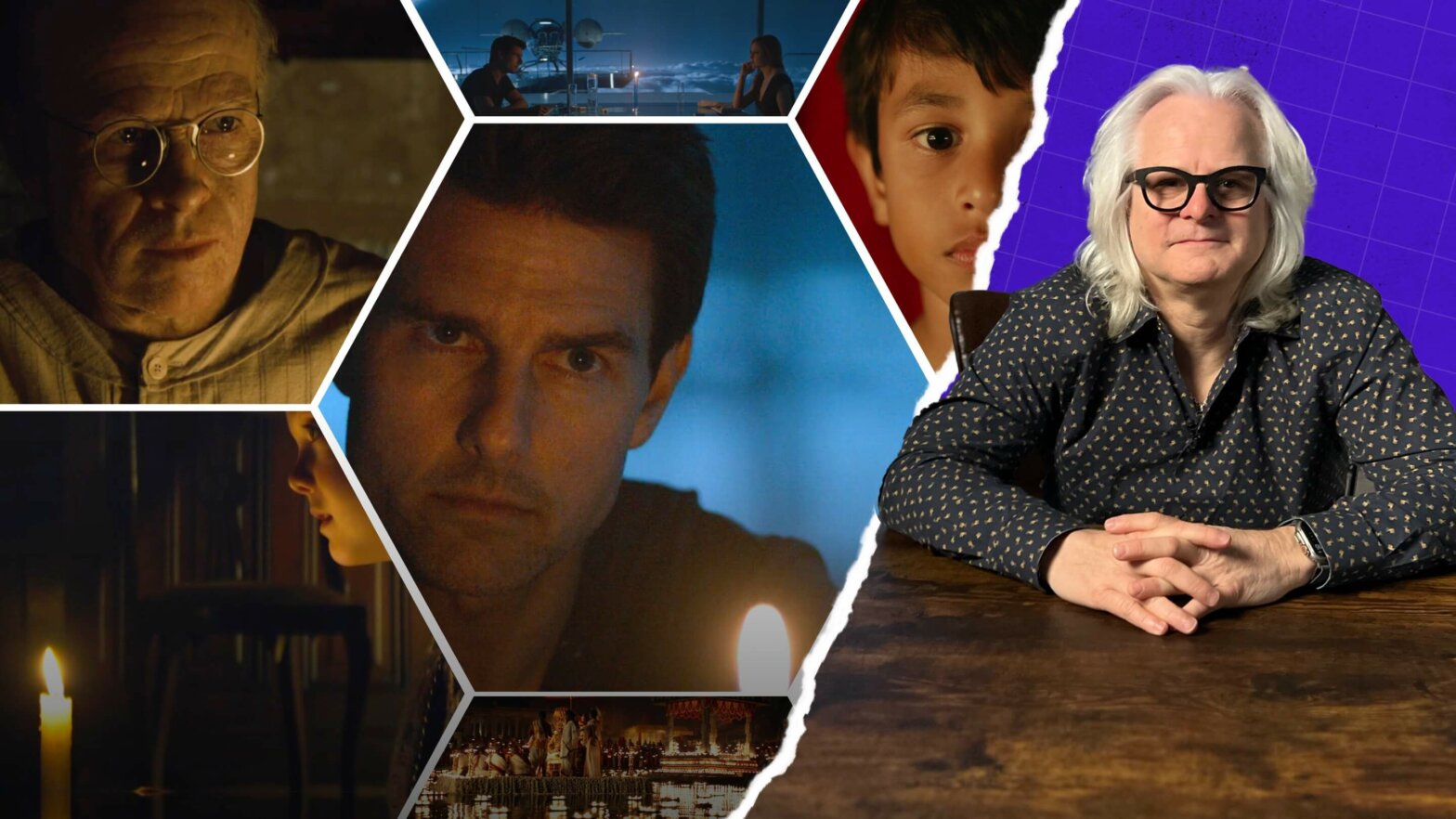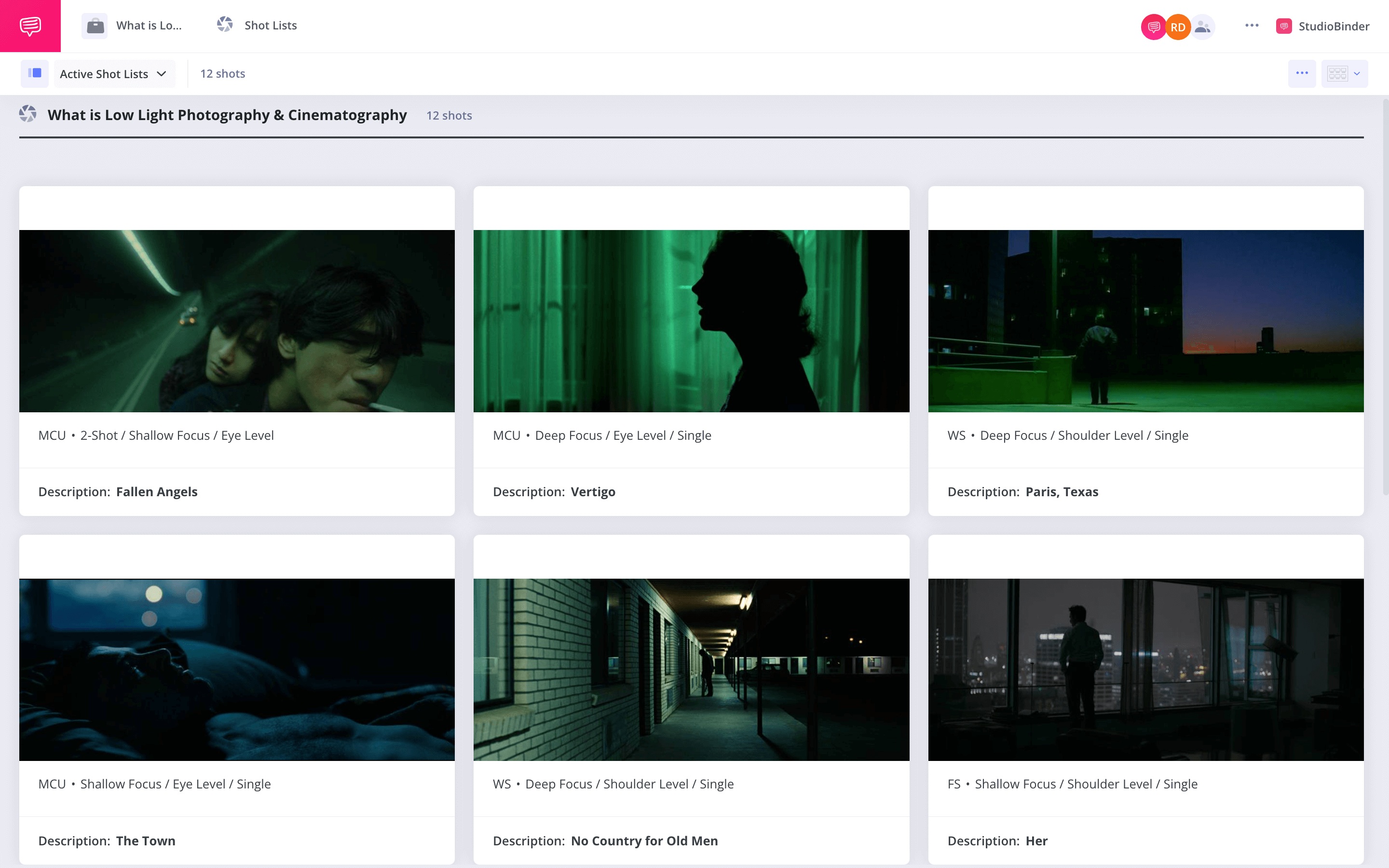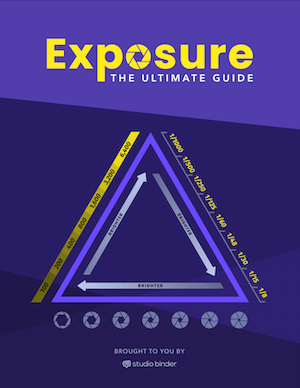Low light cinematography can be daunting. If it goes wrong, an image can be hard to see or fraught with noise. Trying to overcorrect with stronger lights, on the other hand, can make a night scene feel unnaturally bright. How can a cinematographer navigate this minefield to achieve a beautiful low-light shot? In this post, we’ll cover various techniques when shooting low light photography and cinematography. We’ll start with our interview with famed DP Claudio Miranda discussing how to shoot in low light with scenes from Oblivion, Life of Pi, and The Curious Case of Benjamin Button.
We have put together a collection of shots from our favorite films and cinematographers using StudioBinder's storyboard creator to give you an idea of low light photography and cinematography.
Low Light Photography & Cinematography Examples
Low Light Camera Settings
A High Sensitivity Camera
This may come as a surprise, but shooting in low light means you’ll want a camera that can shoot well in low light. But what exactly does this mean?
For low light photography, you’ll likely need to increase your ISO (or, in film terms, ASA). A camera’s ISO refers to its sensitivity to light.
The higher the ISO, the more sensitive it will be to light; in other words, the image will appear brighter.
So now you can just crank your ISO up until your shot is bright enough, right? Not quite. A high ISO has its drawbacks. For many cameras, pushing your ISO into its upper reaches means sacrificing image quality. The higher the ISO, the more prevalent the grain, as you can see in this image.
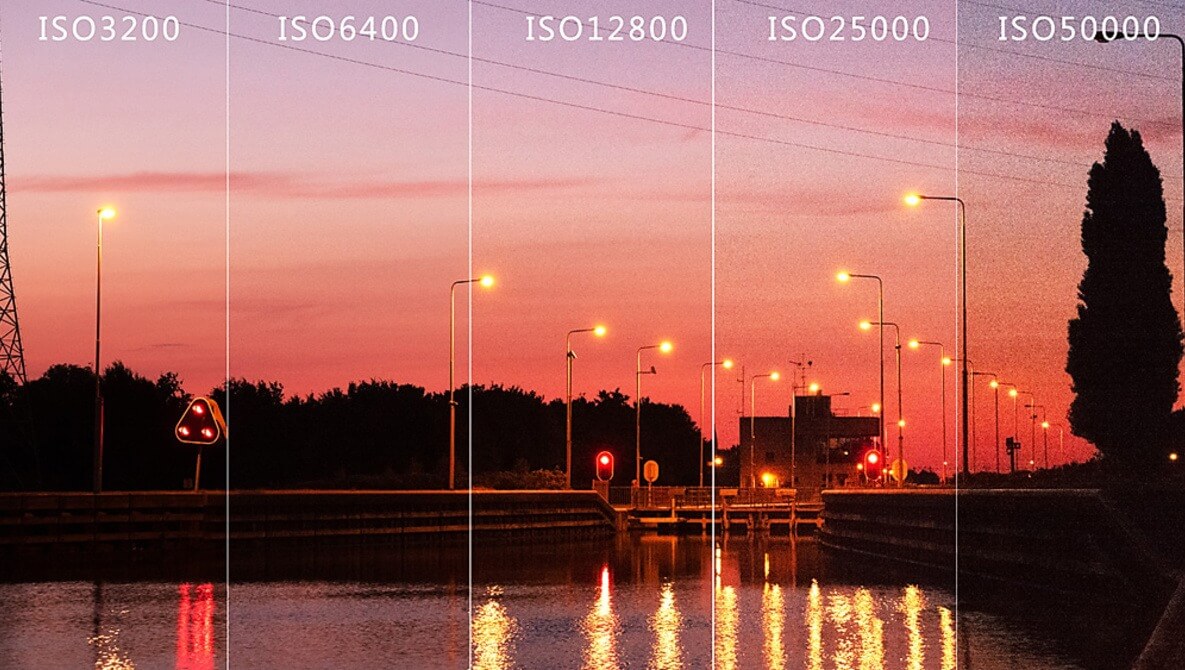
More grain as we get higher ISO • Low light camera settings
But, as Claudio Miranda notes, picture quality for high ISO depends on the camera. A camera with a large sensor will be able to reach higher ISO numbers with less grain than a camera with a lesser sensor.
CAMERA SENSOR DEFINITION
What is a camera sensor?
A camera sensor is what detects visual information when taking a photo or video. It captures light and converts it into the image you are able to see.
No matter what type of light you’re shooting in, it’s crucial to know the base ISO of your camera. This is the ISO that provides the highest-quality image and the least grain.
In an ideal world, you’d always be shooting on your camera’s base ISO.
Of course, this isn’t always possible, especially when shooting in low light. But the closer you can get to the base ISO, the better. This means that for a dark scene, a camera with a higher base ISO (and hence higher sensitivity to light) may be the best option.
For more on ISO, check out our video:
Low light camera settings • Subscribe on YouTube
Sometimes, however, ISO grain can be your friend. Some filmmakers enjoy the stylized look of a grainy image.
Take this shot from the viral sensation Skinamarink:
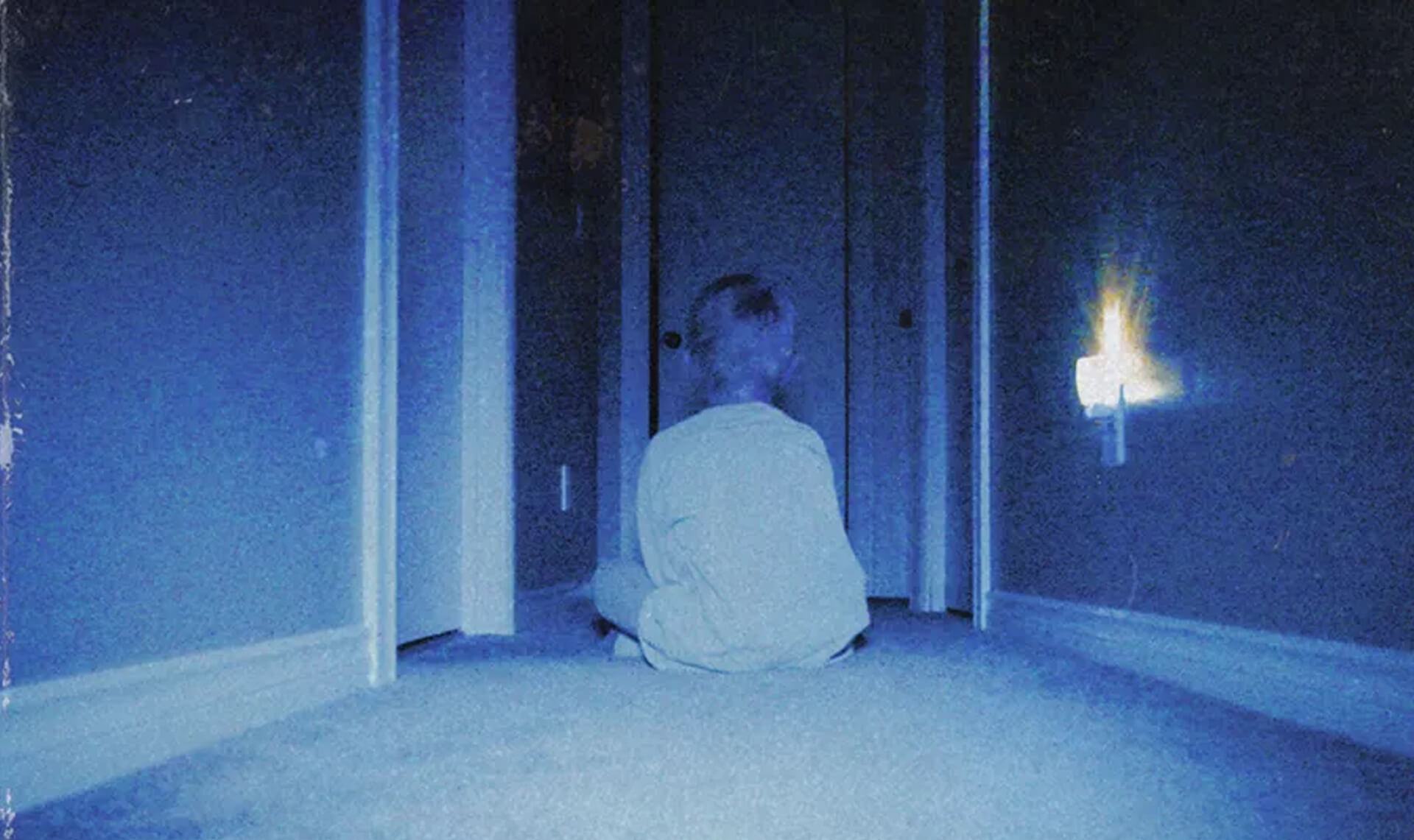
Grain, grain, and more grain • Low light photography settings
There is a lot of grain in this shot (and in the rest of Skinamarink), but this isn’t accidental. Director Kyle Edward Ball uses grain to establish a nostalgic feel to the footage, and to obscure objects in the frame, creating more horror. An ISO at the upper reaches of your camera’s capacity can be a good thing.
But a camera’s ISO isn’t the only tool to pull off a low light shoot.
Related Posts
Best Lens for Low Light
Low Light Lenses
Lenses are an important consideration for any shoot, affecting how you’ll be capturing your subjects in a variety of ways, depending on its focal length, glass quality, and more. For low light photography, it’s important to think about your lens’s speed.
Lens speed refers to the maximum aperture of a lens. The aperture is the opening in the lens through which light travels. The larger the opening, the more light that gets through. If you want to get more into the weeds with aperture, take a look at our explainer video:
What is aperture? • Subscribe on YouTube
A lens that has a large maximum aperture is called a fast lens, because it is conducive to a faster shutter speed — the shutter has to be open for a smaller amount of time to let the adequate amount of light in.
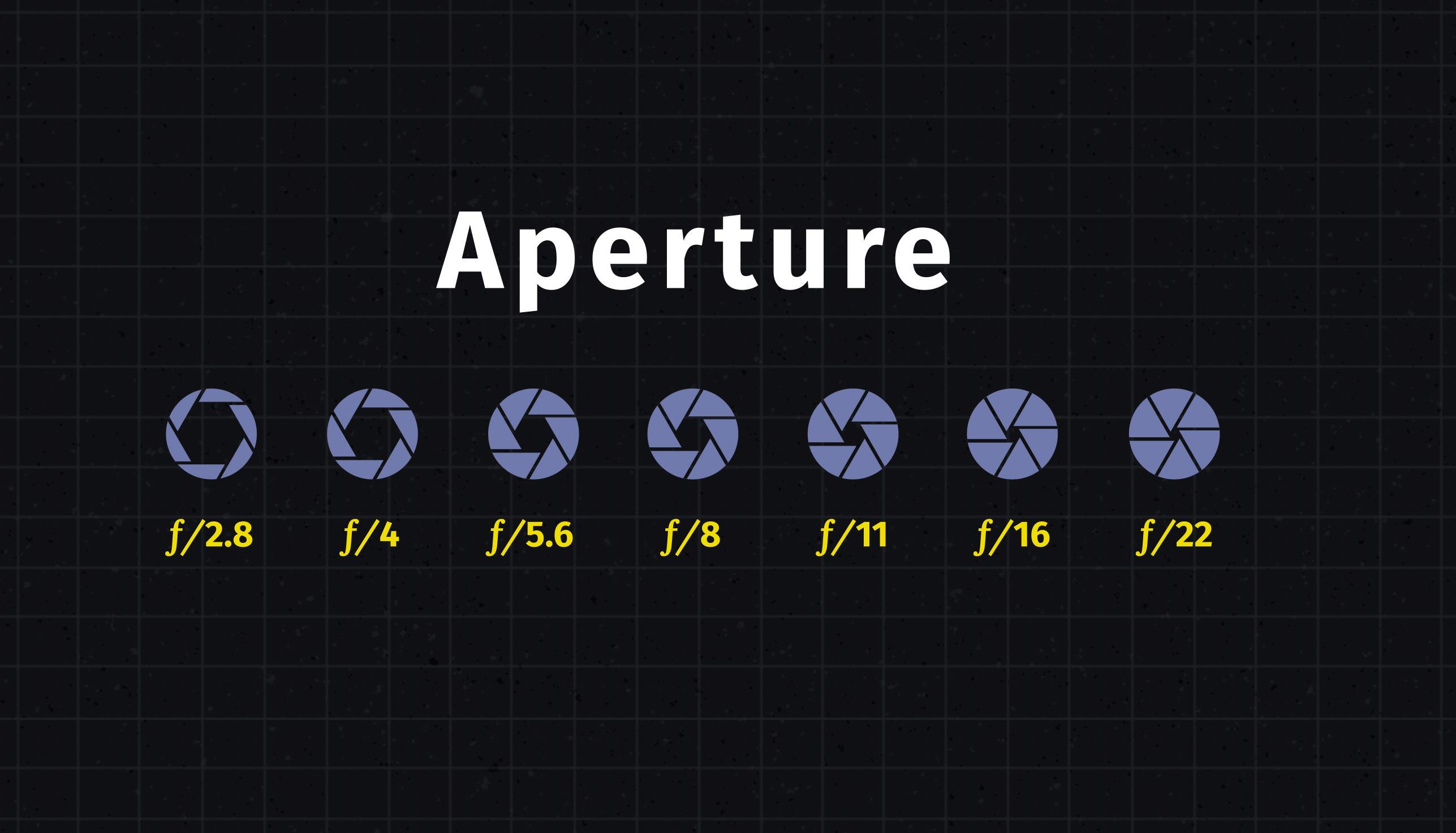
Different apertures • Low light photography settings
Aperture is measured in either F-stops or T-stops. Somewhat counterintuitively, lowering the F-stop results in opening the aperture.
So for a low-light shoot, the faster the lens, the better. This is because with a wide-open aperture, more light will reach your sensor.
But, like with ISO, a low F-stop doesn’t come without its caveats. As you open your aperture to let in as much light as you can, you’ll notice that your lens’s depth of field will shrink.DEPTH OF FIELD DEFINITION
What is depth of field?
Depth of field refers to the range of distances from a camera objects can be while in focus. A shallow depth of field means the range is small, while a deep depth of field means that the range is wide.
A shallow depth of field isn’t necessarily a bad thing. Many cinematographers desire the look — it can create beautiful bokeh shots, like here in Claire Denis’s Beau Travail:
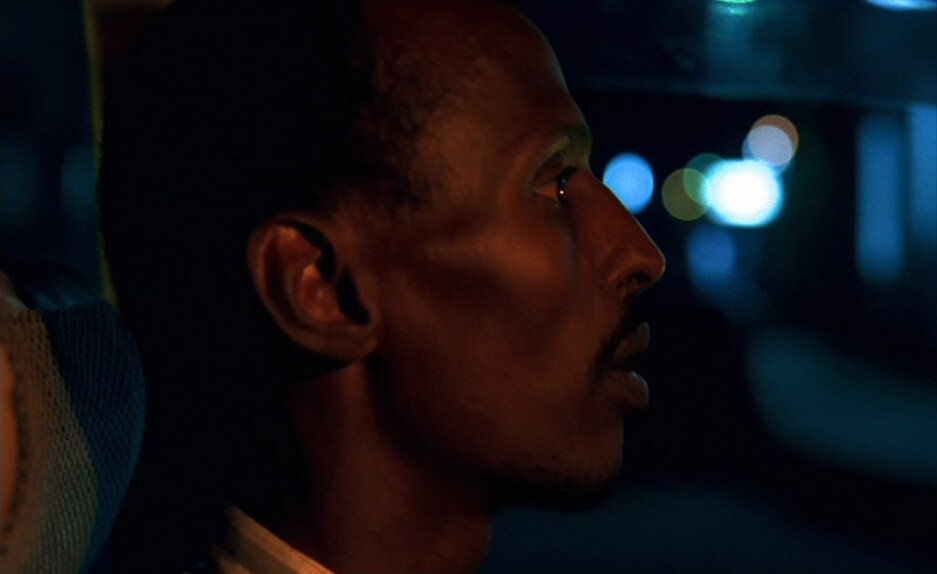
Beau Travail bokeh
Note how the lights in the background have become out-of-focus circles. That’s bokeh, and it looks great.
But a super shallow depth of field can be tricky. It means that a subject can more easily move out of focus, and for scenes with a lot of movement, that might not be ideal. It doesn’t mean it’s impossible, it just means that your focus puller needs to be on the top of their game.
If you want to get more into the exact camera/lens settings you may want for a low light shoot, take a peek at this video, which has a bunch of helpful tips.
How to take pictures in low light
But not all of your solutions need to be in-camera. You can also adjust the scene you’re shooting.
For a complete guide on how to use aperture, ISO, and shutter speed, download our FREE E-book: The Ultimate Guide to Exposure.
Free downloadable bonus
FREE Download
Ultimate Guide to Exposure
The Exposure Triangle is something every photographer and cinematographer needs to master. Download our FREE e-book to get in-depth explanations and tutorials on topics like aperture, ISO, shutter speed, and how to balance these settings to nail perfect exposure every time.
How to Take Low Light Photos
Creative Light Sources
A low-light scene needs to have some light. It’s called low-light photography, not no-light. But because there’s not a lot of it, where you put the little light there is is a crucial decision.
As a cinematographer or photographer planning a low-light shoot, it’s important to think about where lighting could believably be coming from.
Shooting an exterior night scene in a city? Maybe your characters are being lit by warm street lights, with a little blue moonlight as a fill, like in this shot from Before Sunrise shot by DP Lee Daniel:
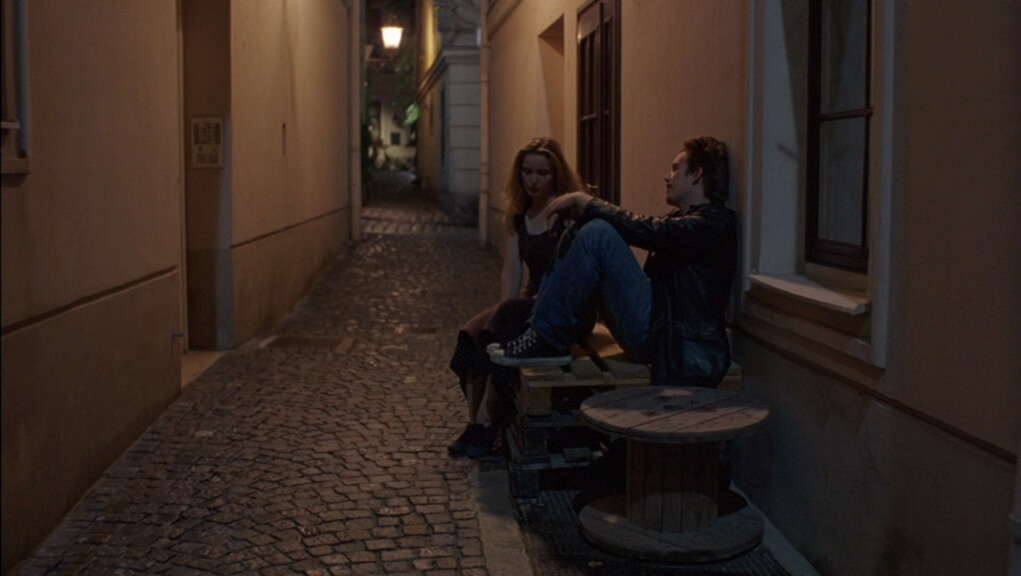
Before Sunrise shows us how to shoot in low light
What if you’re out in the woods? Then you can simulate moonlight with lighting that has a cool color temperature, as we can see in Spielberg’s E.T.:
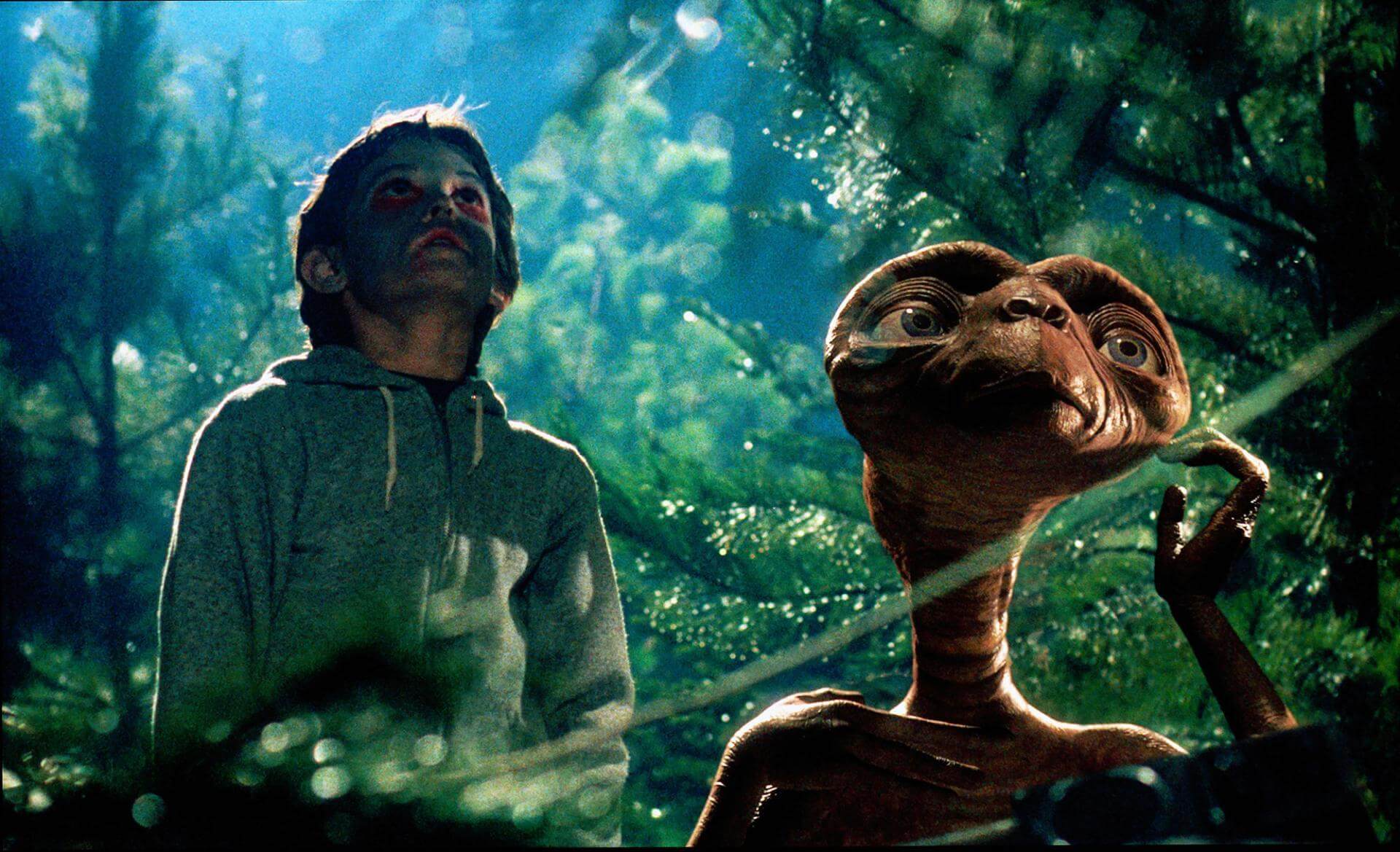
ET at night
With low light scenes, practical lighting is often your best friend. Practical lighting refers to any light source which is visible within the frame. As Claudio Miranda pointed out, a practical light can be as simple as a candle.

“I’ve gone crazy on candles. On Life of Pi, we had 120,000 candles and we had 2,000 people lighting the candles, so that was pretty extreme. I had brought some lights just in case we didn’t have enough candles, and we were lighting some backgrounds. In the end, I just kept on switching them all off. We ended up purely on candles.”
— Claudio Miranda on Life of Pi
In The Village, M. Night Shyamalan and director of photography Roger Deakins use torch lights as practicals:
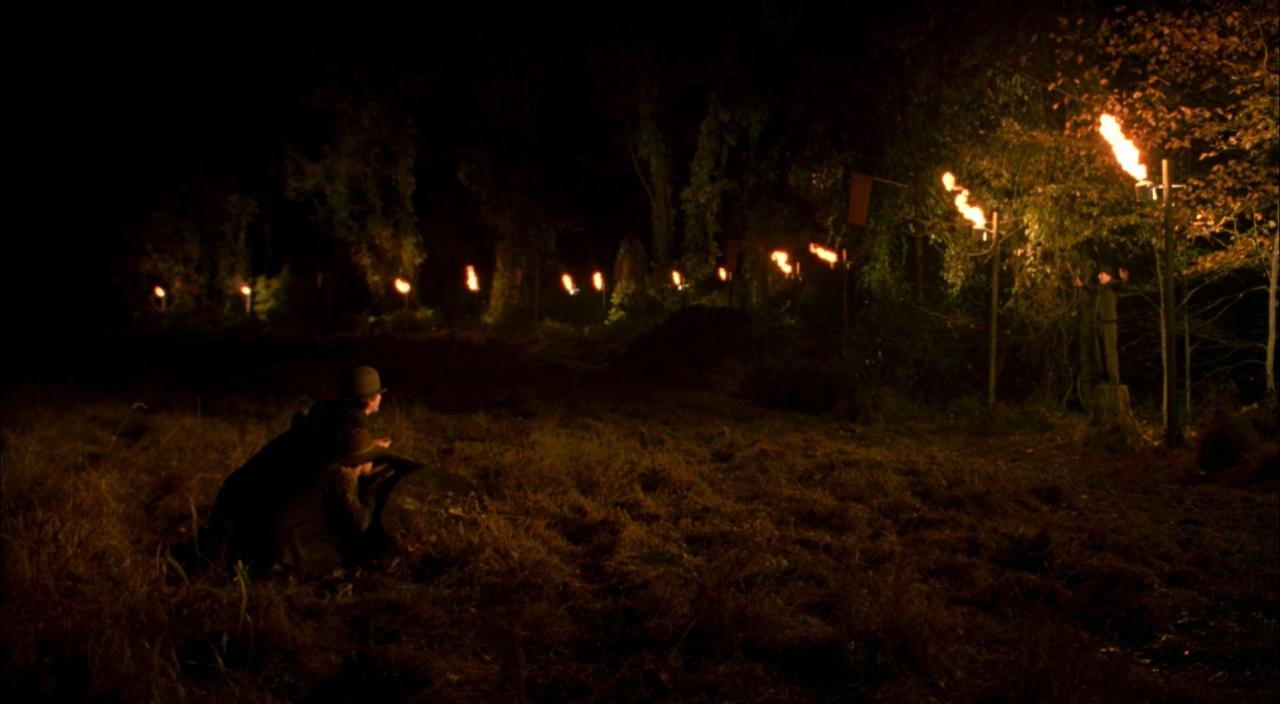
Torches in The Village • Low light photography tips
A great practical in low light scenarios is the flashlight. The characters can direct it wherever the audience is supposed to look and, of course, it feels believable. Perhaps no film uses a flashlight better or more effectively than The Blair Witch Project.
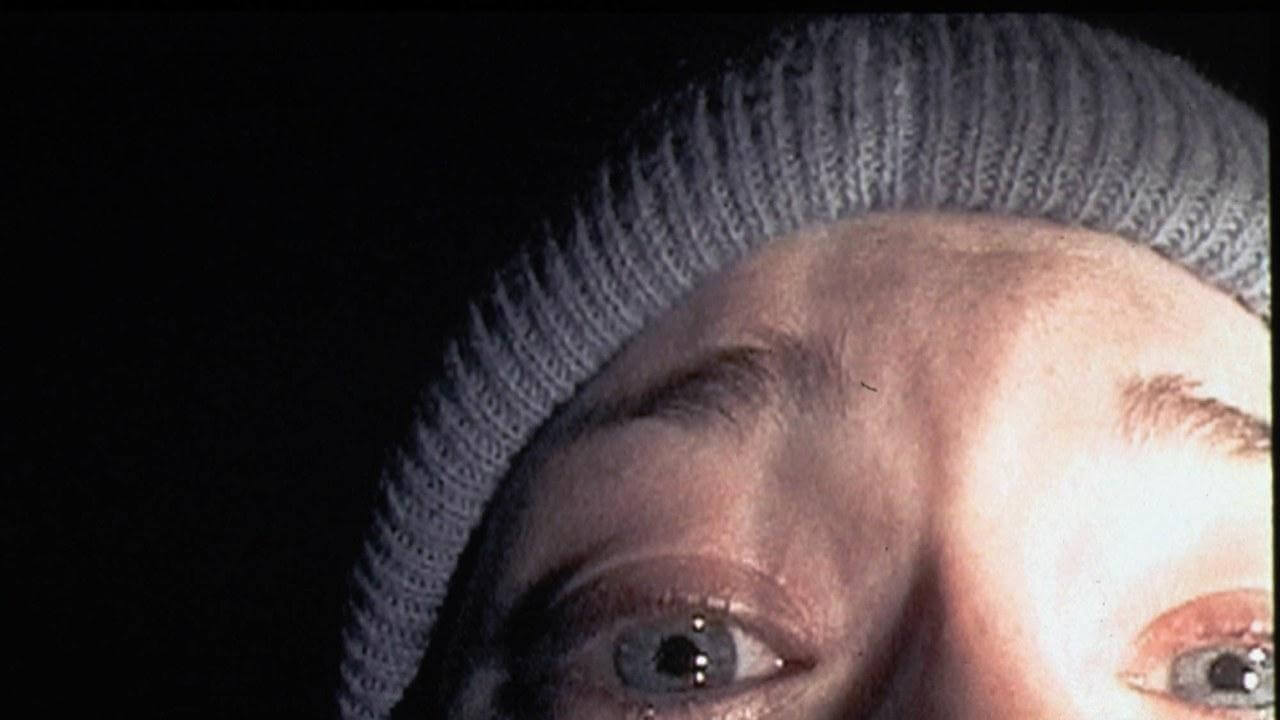
Blair Witch Project still
With Blair Witch, it’s not what the flashlight sees, it’s what it’s missing that is crucial to the horror. What lies in the darkness?
This leads us to our next point.
Low Light Photography
Let There Be (No) Light
This might seem like an obvious point for low light photography, but it’s worth being said. If you’re shooting a low-light scene, it’s okay if some things are lost in shadows. After all, it’s true to life: sometimes, when there’s not a lot of light, we can’t see some things.
As Blair Witch Project illustrates, indiscernible shadows are great for horror – they allow the audience’s minds to run wild. Take this scene from Hereditary (warning: it is not for the faint of heart):
Scary stuff
By any metric, most of the shots in the bedroom are underexposed. But the underexposure works perfectly for the scare at the end of the scene. If this shot was “properly” exposed, the tension of the scene would totally deflate. For more on how suspense can be cultivated using lighting, check out our video:
Suspense, explained
This effect can also be heightened (or diminished) in the post-production process. Coloring in post will allow you to further mold shadows — though the extent to which you can manipulate them depends on the quality of the shot, and your camera.
Darkness doesn’t need to be reserved for horror. Deep shadows are a staple in film noirs as well. Take this still from In a Lonely Place:
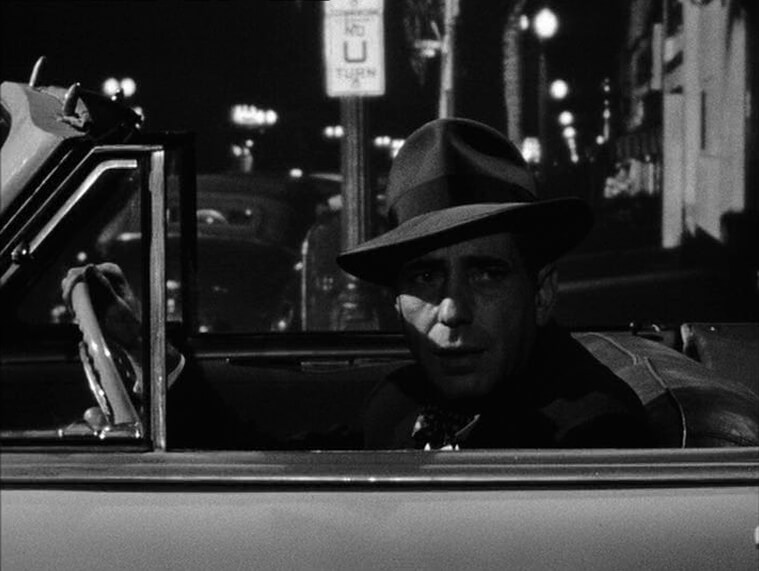
In a Lonely Place
Here, Dix’s face is shrouded in shadow – usually a no-no for lighting a subject. But letting darkness overtake his face makes him seem more menacing, fitting for a film rife with paranoia.
Noirs use low light situations to create chiaroscuro. What is chiaroscuro? Check out our video on the topic:
Chiaroscuro in film • Subscribe on YouTube
Shadows allow for you to direct an audience’s attention and establish the mood of a scene. Eliminating them may not always be in your best interest.
While low light cinematography may seem intimidating, the tools we’ve discussed so far mean that it’s wholly possible to pull off. Sure, a cinematographer paints with light, but sometimes it’s nice to leave some space on the canvas.
Up Next
What is High Key Lighting?
Now that we’ve established how to shoot in the shadows, it’s time to take a look at how to do the opposite. High key lighting can be used in a variety of ways, and has its own set of tools and techniques.
Up Next: High Key Lighting →
Showcase your vision with elegant shot lists and storyboards.
Create robust and customizable shot lists. Upload images to make storyboards and slideshows.
